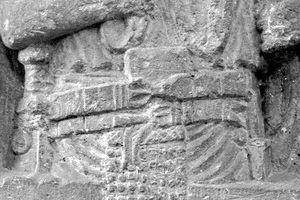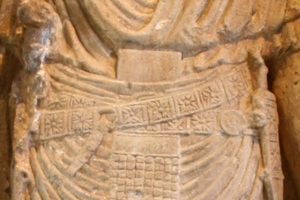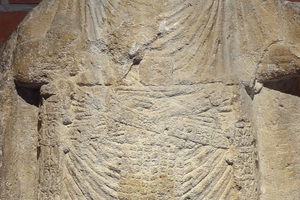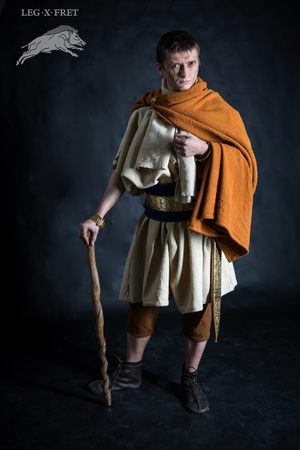Fascia Ventralis
The fascia ventralis (Latin for "ventral band") was a waistband made of fabric worn by soldiers in the Roman army. It was worn beneath the cingulum, either without armor or with a subarmalis. It likely had a practical purpose: the cingulum was typically worn over loricae, which added bulk around the waist, and a waistband without armor would be loose and prone to slipping down. The fascia, in turn, helped prevent this. Depictions indicate that the fascia was primarily worn by legionaries and auxiliaries. On many reliefs that presumably show the fascia, legionaries are depicted with two cingula, and there is a small wooden tablet, likely a tessera, beneath the fascia. There are no archaeological findings of the fascia ventralis, most likely because the waistband had a simple design, making it difficult to identify any fabric remnants as specifically belonging to the fascia.
 Fragment of a gravestone with fascia to Gaius Largennius from legio II Augusta. Strathsburg. Early 1st century AD
Fragment of a gravestone with fascia to Gaius Largennius from legio II Augusta. Strathsburg. Early 1st century ADReenactment
The fascia ventralis can be used in the reenactment of a Roman military outfit. It was worn over the tunic, wrapped around the waist, and secured with the cingulum. The pattern is a long rectangle, and it is recommended to sew a wool strip of fabric in half to add volume and prevent the belt from being excessively long.






